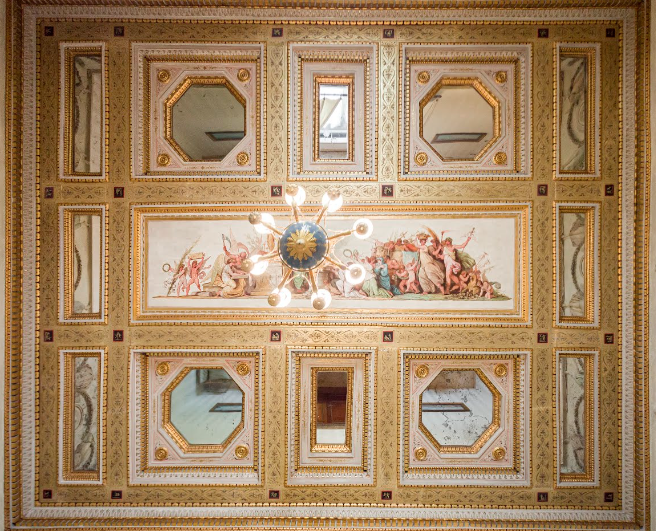Napoleon’s memory endures on European soil on the beauty of luxurious homes to celebrate the glory seduced on the battlefield. The year was 1811 and, in Rome, invaded by French troops since 1808, the restyling of the Quirinale palace began to set up the official Napoleonic residence in the second city of the Empire. Napoleon’s apartment, furnished in the oldest rooms, still exhibits the splendor of majestic decorations today. The living room, now known as the Sala delle Dame, is adorned with the sculpture most worthy of the decorative campaign: the stucco frieze created by the Danish artist Bertel Thorvaldsen (1768 – 1844) to celebrate the triumph of Alexander III of Macedonia known as the Great praises the conqueror revered by Corsican leader. The vault was decorated with Virtue (the order of divinities of ancient Rome) by the fresco artist Felice Giani (San Sebastiano Curone, 15 December 1758 – Rome, 11 January 1823) to support the painted Julius Caesar and suggest the nodal line to His Majesty imperial and royal Napoleon I. Giani’s inspiration extended panoplies of arms, convulsive battles, winged nikai, apotheosis of tutelary gods of Rome to the halls of Victory, Peace, Music. The allusion to the dressing of the heroes emerges from the Napoleonic sitting room used as a toilet and dressing room decorated with winged and armed genits. The position of the windows opens up the overall view of the Eternal City from Napoleon’s studio. The restoration finished by various artists to secularize the apostolic palace is obscure for the Emperor forced into exile on Elba (1814). The choice of tapestries donated by Napoleon to Pius VII survived the Quirinale as well as the annexation of the Papal States to the Kingdom of Italy (September 20, 1870). The bicentenary of Giani’s disappearance is also evoked by the exhibitions set up at his birthplace from 2 July to 1 October 2023.
